What is Candida Overgrowth?

When the gurgling in your stomach becomes noxious gas, and bouts of diarrhea or constipation throw off your schedule… when unexplained weight gain and bloating hits, you might be faced with a gut dysbiosis called Candida overgrowth.

In your gut, candida can lead to some annoying issues. The problem comes when it spreads through the body to other locations. A yeasty smell under your arm, a sore throat, or itchiness can be other noticeable effects. It can also lead to fatigue, distraction, reoccurring infections, and joint pain.
If you're having trouble figuring out what’s going on with your health and you match some of the symptoms below, you should be tested by your doctor to see if you have an overgrowth of the candida yeast.
What is Candida Overgrowth?
When the yeast Candida albicans functions correctly in the body, it helps digest our food, increases nutrient absorption, and is part of the protective layer of bacteria and yeast in our bodies. In certain circumstances, this yeast can out-compete and destroy other infections including the common cold, less desirable fungal infections, and digestive viruses.
So, we don't want to eliminate Candida completely, just get it to normal levels.
Unfortunately, most people have an overgrowth of candida. This is where the yeast can secure enough nutrients to reproduce rapidly, and it experiences little or no competition.
Primarily, it needs sugars to multiply. In the American diet, a person typically consumes 250 to 300 g of sugars every day. That's three times what we need to be healthy, functional adults. Additionally, lifestyle choices such as processed foods, alcohol, contraceptives, stress, and antibiotics disrupt our natural gut bacteria balance and skin flora, which removes the competition for nutrients.
The biggest culprit for Invasive Candidiasis is a combination of taking oral antibiotics and a diet that has too much sugar. By some estimates, during antibiotic treatment, gut yeast can increase in population over 40 times. The danger of this is that it’s possible the yeast can get into our blood causing systemic health problems where, in a few cases, people have died.
Another big issue with Candida overgrowth is that it aggravates many other health problems, especially gut problems, including Crohn’s disease, IBS, and constipation.
Signs & Symptoms of Candida Overgrowth
A lot of people have the signs and symptoms of candida overgrowth. You'll find much of what we have listed here as problems you may be experiencing yourself. However, we want to warn you that many of these symptoms are typical for many other diseases and conditions people experience. For example, this list is almost identical to intestinal cancer, autoimmune issues, and adrenal fatigue.
We recommend being tested by a doctor to verify you have a real candida overgrowth and eliminate the possibilities of more severe diseases.
Common symptoms of candida overgrowth include:
- Bloating
- Constipation and/or diarrhea, or alternating between the two
- Undefined autoimmune problems
- Fatigue and tiredness
- Reoccurring infections
- Concentration issues, ADHD, or poor memory
- Skin issues including a yeasty smell, eczema, hives, and rashes itching
- Mood swings, anxiety, or depression
- Cravings for sugar or processed foods

Is a Candida Cleanse Going to work?
Most medical associations agree: going on a Candida cleanse and adjusting your diet to reduce added sugars, processed foods, and simple carbohydrates will make you feel better. However, most disagree that a Candida cleanse decreases the number of Candida to a point where it makes a difference in your physical health.
So, what is going on with the Candida cleanse?
When it comes to the Candida itself, reducing the sugars in your diet restricts the food for the yeast, and eventually the candida numbers diminish. The healthier diet that includes lower-carbohydrate fruits and vegetables provides a lot of nourishment for healthier gut bacteria to flourish, and robs the Candida of its real estate.
A lower carbohydrate, high vegetable diet solves many problems in the body, not just readjusting the gut bacteria towards a healthier balance. So, it’s essential as part of a Candida regiment to follow a lower carbohydrate, high vegetable diet.
Another vital part of a Candida cleanse is to consume specific natural elements that directly impact the candida in your system. For this, many herbs, spices, and oils become a bedrock of a person's diet. We have a number of those herbs and spices listed below.
Finally, lifestyle choices play a big part in the cleanse. Exercising correctly, getting enough sleep, and reducing stress help bring the body into a better natural alignment, and this can help you digest food better and support the natural healing process in the body, which can keep the Candida in check.
Food & Herbs for Candida Overgrowth
A lower carbohydrate, high vegetable diet is the essential keystone of controlling candida overgrowth. Basically, don't feed the yeast.
You then add in potent foods and spices that are known to help support healthy gut bacteria and suppress less desirable ones. Adding in spices such as garlic, onion, turmeric, and ginger help support proper digestion, and their extracts have been known for destroying the Candida.
Other vegetables that are known or suspected anti-fungal or anti-yeast agents are parsnips, radishes, all green leafy vegetables, fennel, and any of the Cruciferous vegetables such as broccoli, cabbage, and mustards. The lower carbohydrate nightshades also show potential at helping with the candida overgrowth, including tomatoes, peppers, and eggplant, although the high carbohydrate potatoes should generally be avoided.
You can also try some of these extracts below that have been shown to be beneficial antifungal agents.
Oregano
Oregano is a natural antifungal agent and often employed against thrush and nail fungus. Similarly, it's believed that oregano oil would work against Candidiasis.
In a study in vitro, the activity of oregano essential oil was tested against 16 different species of candida. According to the study, all species tested were sensitive to the oregano essential oil.
Additionally, other studies have shown that oregano essential oil, and even the leaves of dried oregano, have microbial inhibitory properties and may be beneficial for helping to preserve food from bacterial overgrowth.
Olive Extract
Extracts of the essential oil from the olive leaf are different than olive oil. But, they have potent health benefits. In a study against two different species of candida, olive leaf extract has a cytotoxic effect on each strain tested. Even at very low levels, the extract showed an impact. Primarily, cells demonstrated apoptosis, meaning cells died naturally but did not propagate.
The phenolic compounds of the olive leaf, such as oleuropein and its derivatives, are the primary antimicrobial and antifungal activity within the olive leaf. Thisoleuropein is known for disrupting protein replication.
One particular study shows that an aqueous extract of the olive leaf destroys 15% of the candida within 24 hours. Other components, including caffeic acid and verbascoside, have been shown to have antibacterial effects.
Grapefruit Seed Extract
Grapefruit seed extract can virtually stop the growth rate of the candida bacteria within your gut. One study shows that at low concentrations, grapefruit seed extract works similarly to prescription medications by lowering the growth rate of the yeast to nearly nothing.
Another study compared the results of grapefruit seed extract to chlorhexidine, showing a 20% aqueous extract was equivalent in effect to the most common concentrations of this medication.
Herbs for Candida
Herbs throughout history have been used to help counter various health issues, including fungal infections. Although we didn't know about the candida yeast until just a few years ago, many of these herbs were used to solve the problem because the healers recognize the effects of people getting healthy.
If you do choose to use these herbs, make sure you visit a qualified herbalist. When you want a supplement, make sure you pick one that is backed by doctors experienced in this realm.
Pau D’Arco
Used in many folk remedies for different microbial and fungal infections, Palo D’Arco is shown to contain chemicals known to have antibacterial and antifungal activity, including lapachol and napthoquinoes.
Although difficult to find studies to support Palo D’Arcois effective against the candida yeast specifically, numerous products exist online that reference internal studies that show the extracts of Palo D’Arcoare effective against yeast, and candida, in particular.
Wormwood Extract
Wormwood is a potent herb used to destroy parasites within the gut. Fortunately, unlike Palo D’Arco, studies of wormwood’s effectiveness are easy to find. In one study, three different concentrations of Artemisia extract were effective at specifically suppressing the growth of candida. The study mentions higher levels are needed for the best effectiveness, but it works at all levels.
Artemisinins, one of the components of wormwood, shows promise at destroying the biofilm barrier created by Candida, which allows medications to become much more effective.
Berberine
Berberine is shown to be synergistic with many medications against Candida – it helps medications work better. Some candida species that have become resistant to fluconazole, and some studies show that the addition of berberine chloride eliminates that resistance.
On its own, berberine has been shown to inhibit the growth of candida. At low concentrations of 5 micrograms per milliliter, it was able to slow the growth of candida, while at 75 micrograms per milliliter, it completely inhibited the growth.
What You Can Do Right Now for Candida
If you believe you have a Candida overgrowth, you can start right now by choosing a lower carbohydrate diet. This diet includes eliminating processed foods, bread, pasta, and anything with added sugar. Just about all doctors agree that a low-carbohydrate diet that removes process food is healthy for all conditions, so even if you don't have an overgrowth of yeast, you are still improving your health.
You should talk to a doctor to verify if there is a Candida overgrowth or not. Depending on the severity, your doctor may recommend a course of antiviral medications that will help get the infection under control or help you choose more lifestyle habits that you can implement to restore the health of your gut naturally.
- Nutracare Team

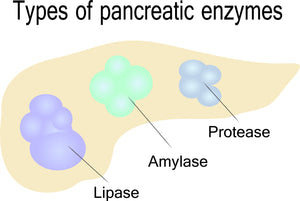

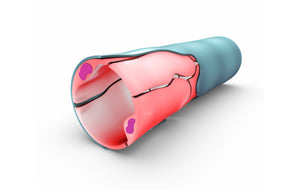
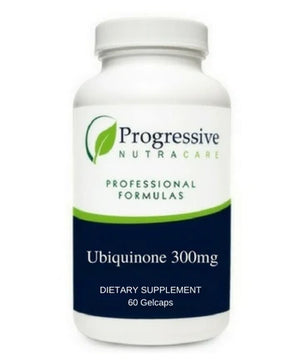
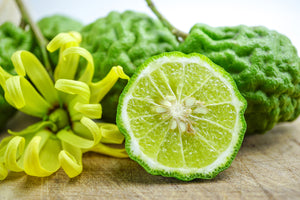
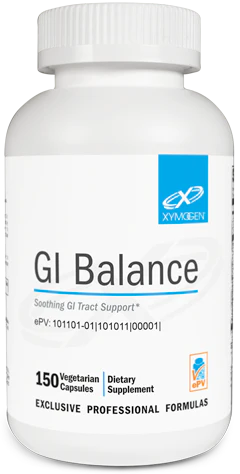
Comments 1
Kim
A wealth of information